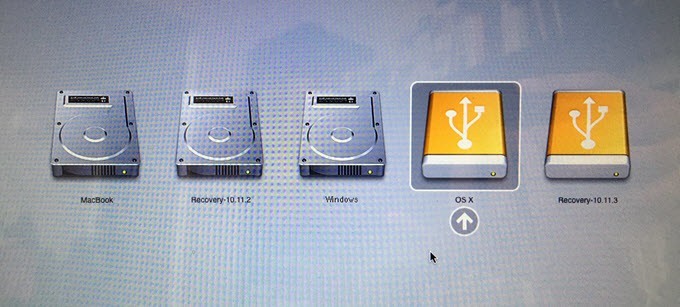Then click Yes to confirm that you want to burn the boot flash drive. Wait for the software to generate boot files on the flash drive. And then click Finish after finishing burning. Step 5: Connect the made bootable USB flash drive with the original computer, and then boot it from the bootable USB flash drive. If you have started up your Mac in Windows using Boot Camp, you can use the Boot Camp system tray to switch your startup disk default back to OS X. In Windows, click the Boot Camp icon in the system tray. From the menu that appears, choose Restart in OS X. Start from OS X Recovery. The way to boot into Recovery on an Intel Macs is to hold down Command-R on the keyboard as the Mac boots. It's different on Apple silicon Macs. Here's how it's done.
These key combinations apply only to Mac computers with an Intel processor.
Live desktop live wallpapers 6 0.
To use any of these key combinations, press and hold the keys immediately after pressing the power button to turn on your Mac, or after your Mac begins to restart. Keep holding until the described behavior occurs.
Mac Boot To Different Drive
- Command (⌘)-R: Start up from the built-in macOS Recovery system. Or use Option-Command-R or Shift-Option-Command-R to start up from macOS Recovery over the Internet. macOS Recovery installs different versions of macOS, depending on the key combination you use while starting up. If your Mac is using a firmware password, you're prompted to enter the password.
- Option (⌥) or Alt: Start up to Startup Manager, which allows you to choose other available startup disks or volumes. If your Mac is using a firmware password, you're prompted to enter the password.
- Option-Command-P-R:Reset NVRAM or PRAM. If your Mac is using a firmware password, it ignores this key combination or starts up from macOS Recovery.
- Shift (⇧): Start up in safe mode. Disabled when using a firmware password.
- D: Start up to the Apple Diagnostics utility. Or use Option-Dto start up to this utility over the Internet. Disabled when using a firmware password.
- N: Start up from a NetBoot server, if your Mac supports network startup volumes. To use the default boot image on the server, hold down Option-N instead. Disabled when using a firmware password.
- Command-S: Start up in single-user mode. Disabled in macOS Mojave or later, or when using a firmware password.
- T: Start up in target disk mode. Disabled when using a firmware password.
- Command-V: Start up in verbose mode. Disabled when using a firmware password.
- Eject (⏏) or F12 or mouse button or trackpad button: Eject removable media, such as an optical disc. Disabled when using a firmware password.
If a key combination doesn't work
https://downffil719.weebly.com/iflicks-3-4-1.html. If a key combination doesn't work at startup, one of these these solutions might help: Iconjar 1 13 3.
- Press and hold all keys in the combination together, not one at a time.
- Shut down your Mac. Then press the power button to turn on your Mac. Then press and hold the keys as your Mac starts up.
- Wait a few seconds before pressing the keys, to give your Mac more time to recognize the keyboard as it starts up. Some keyboards have a light that flashes briefly at startup, indicating that the keyboard is recognized and ready for use.
- If you're using a wireless keyboard, plug it into your Mac, if possible. Or use your built-in keyboard or a wired keyboard. If you're using a keyboard made for a PC, such as a keyboard with a Windows logo, try a keyboard made for Mac.
- If you're using Boot Camp to start up from Microsoft Windows, set Startup Disk preferences to start up from macOS instead. Then shut down or restart and try again.
Remember that some key combinations are disabled when your Mac is using a firmware password.

Learn more
Boot Mac To Usb Drive
- Learn what to do if your Mac doesn't turn on.
- Learn about Mac keyboard shortcuts that you can use after your Mac has started up.
Back up any data on the iMac that you want to keep.
Clone the MacBook Pro's internal drive volume to the external drive. For cloning, you can use Carbon Copy Cloner or SuperDuper. Change the startup disk setting to the external drive to confirm you can boot off of it and it works like the internal drive. Change the startup disk setting back, shut down and disconnect the external drive; connect it to the iMac. Make sure the iMac can see the external drive and change the startup disk setting to the external drive; start up the iMac from the external drive. Make sure it works properly. Once you are satisfied, use the cloning utility you used before to clone the external drive to the internal drive. Change the startup disk setting back to the internal drive and try to start up from it. Restore any other data from the backup you made.
Mac Boot From External Disk
Jul 13, 2009 4:40 PM
